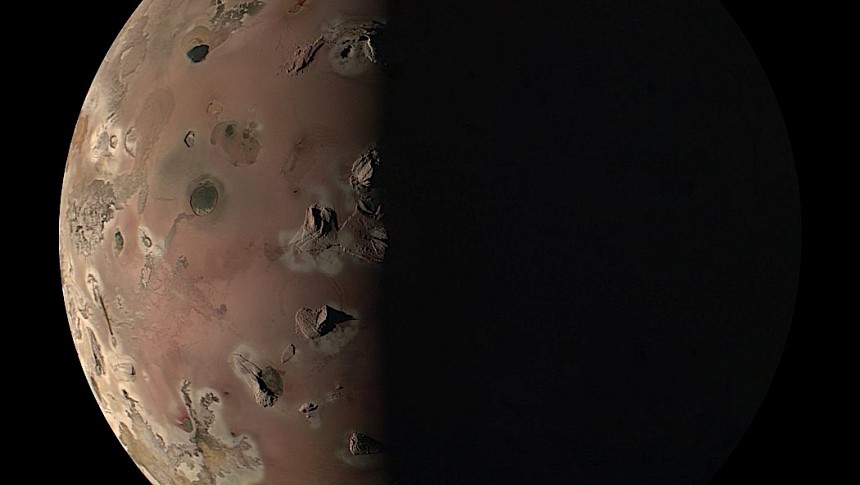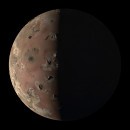There are four giant planets in our solar system - Jupiter, Saturn, Uranus and Neptune – and each of them is accompanied in their orbits around the sun by a number of moons so large it's like these worlds have their own planetary systems.
The champion in this respect is Saturn, which is orbited by no less than 146 celestial bodies. Jupiter comes in second, with 95, Uranus is next with 27, and Neptune ranks last with 14. And whereas the planets themselves are unlikely to harbor any life in the sense we understand it, several of those 282 moons have a good chance of doing just that.
In fact, some of those moons have a bigger chance of harboring life than neighboring Mars. Yet humans have only sent a limited number of missions out there, not in small part because of the challenges imposed by the huge distances involved.
One of these missions is Juno. Having departed our planet in 2011, it headed for the Jovian system not to look for life, but to get a better understanding of how Jupiter was born and how it evolved, in a bid to give us a better understanding of the other such giants we keep discovering in our galaxy.
Juno is an impressive spacecraft to say the least. It was the first human-made spacecraft to look beneath the dense clouds that surround the planet. And, at the time of writing, it is NASA's most distant planetary orbiter, doing its thing in a place located 1.7 billion miles (2.7 billion km) away from home.
The spacecraft has been on duty since 2016, but it was only in the last days of December 2023 that it managed a crucial milestone: it gave humanity the closest look yet at one of the planet's most impressive moons, Io.
Io is the closest moon to Jupiter of the four massive ones we know as the Galileans (the other three are Europa, Ganymede, and Callisto), and the third-largest of the pack. What makes it special is the fact it is the most volcanically active world in the solar system, all while being slightly larger than our own Moon.
How active? Well, consider it has hundreds of active volcanos, many of which constantly spit lava into the surrounding space, at altitudes that can reach dozens of miles high. Some of them are so powerful that their eruptions can be seen from Earth, using large telescopes.
The place has been an object of study for our species for a while now, but the image Juno sent back at the end of 2023 is the most detailed yet. That's because it was taken from an altitude of just 930 miles (1,500 km) above the body's surface.
The goal of the close fly-by (normally Juno doesn't come closer than 6,830 miles/11,000 km from Io) was to give us a better understanding of the source of this intense volcanic activity.
The result of the flyby can be enjoyed in the main photo of this piece, showing a world with a surface not unlike that of Mars (minus the craters and plus a lot of volcanos), reddish in appearance but scarred by gray and nasty-looking solidified lava.
The handlers of the Juno mission are planning a return to this place in February, so it's likely more stunning images of this world will be released then.
In fact, some of those moons have a bigger chance of harboring life than neighboring Mars. Yet humans have only sent a limited number of missions out there, not in small part because of the challenges imposed by the huge distances involved.
One of these missions is Juno. Having departed our planet in 2011, it headed for the Jovian system not to look for life, but to get a better understanding of how Jupiter was born and how it evolved, in a bid to give us a better understanding of the other such giants we keep discovering in our galaxy.
Juno is an impressive spacecraft to say the least. It was the first human-made spacecraft to look beneath the dense clouds that surround the planet. And, at the time of writing, it is NASA's most distant planetary orbiter, doing its thing in a place located 1.7 billion miles (2.7 billion km) away from home.
The spacecraft has been on duty since 2016, but it was only in the last days of December 2023 that it managed a crucial milestone: it gave humanity the closest look yet at one of the planet's most impressive moons, Io.
Io is the closest moon to Jupiter of the four massive ones we know as the Galileans (the other three are Europa, Ganymede, and Callisto), and the third-largest of the pack. What makes it special is the fact it is the most volcanically active world in the solar system, all while being slightly larger than our own Moon.
How active? Well, consider it has hundreds of active volcanos, many of which constantly spit lava into the surrounding space, at altitudes that can reach dozens of miles high. Some of them are so powerful that their eruptions can be seen from Earth, using large telescopes.
The place has been an object of study for our species for a while now, but the image Juno sent back at the end of 2023 is the most detailed yet. That's because it was taken from an altitude of just 930 miles (1,500 km) above the body's surface.
The goal of the close fly-by (normally Juno doesn't come closer than 6,830 miles/11,000 km from Io) was to give us a better understanding of the source of this intense volcanic activity.
The result of the flyby can be enjoyed in the main photo of this piece, showing a world with a surface not unlike that of Mars (minus the craters and plus a lot of volcanos), reddish in appearance but scarred by gray and nasty-looking solidified lava.
The handlers of the Juno mission are planning a return to this place in February, so it's likely more stunning images of this world will be released then.
On Dec. 30, our #JunoMission made its closest-ever approach to Jupiter’s moon Io, soaring about 930 miles (1,500 km) above the solar system’s most volcanic world.
— NASA (@NASA) January 2, 2024
Juno captured Io’s molten surface and will return for another look in February: https://t.co/UnZpyaFMsC pic.twitter.com/NO4iGndmZ0






